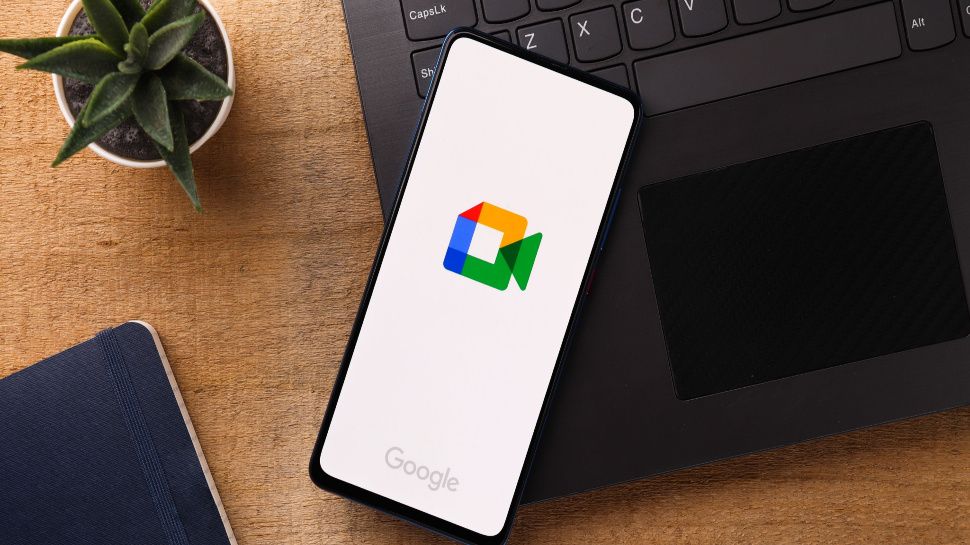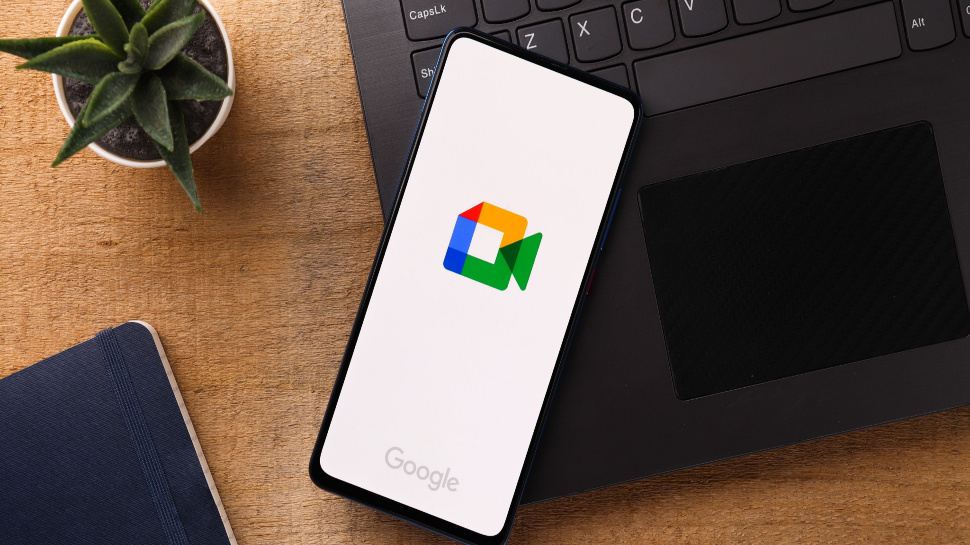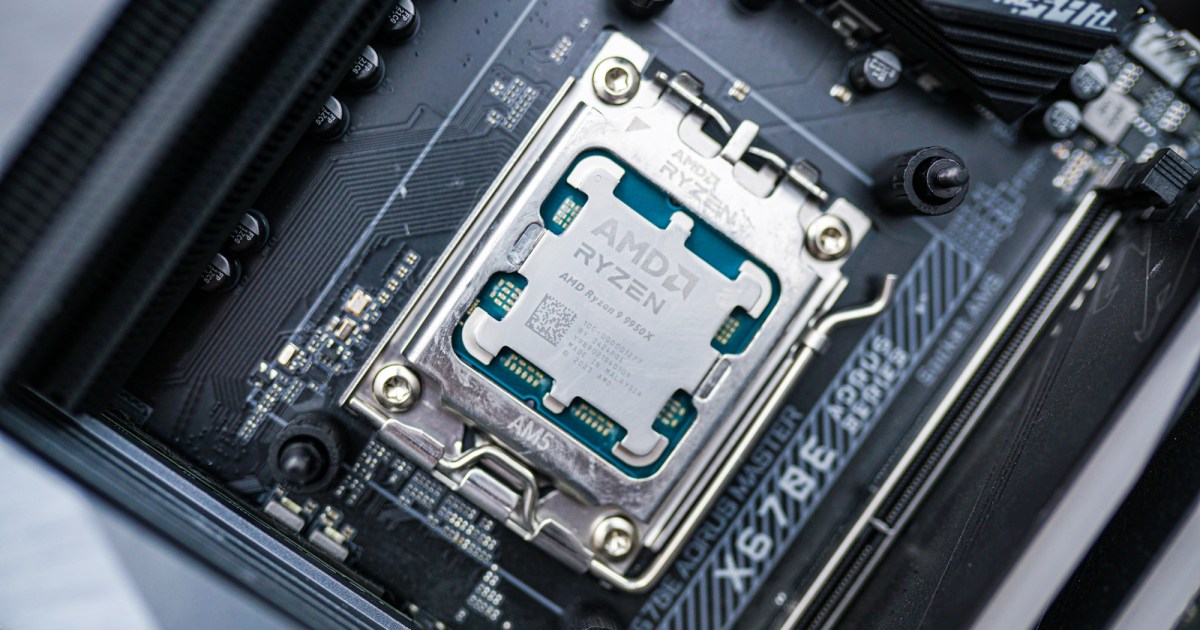Google Meet has announced a new update that allows meeting participants to display their pronouns on calls.
The update, available when using the video conferencing tool on the web, will show users’ pronouns on their video tiles if they have them set up in their Google Accounts.
Admins will need to enable the feature within users’ accounts, and the feature is only available for Google Workspace subscriptions including Business and Education users, leaving individual account holders without support for pronouns for the moment.
Once enabled, end users can set their pronouns by going to their Google Account’s ‘About Me’ page and selecting from a predefined list of pronouns or creating a custom one. Furthermore, users will need to set visibility to ‘Anyone.’ Google’s decision to roll out broader support for pronouns across its ecosystem is part of the company’s broader effort to promote inclusivity – pronouns are also supported alongside contact information in Calendar, Chat, Docs, Gmail and more, making it easier for others to refer to individuals correctly.
It’s worth noting that while the functionality is only supported on web at the moment, users can still set their pronouns on mobile devices, suggesting that Google could be working on UI changes to make displaying pronouns on smaller screens easier, though this is only speculation.
Users are encouraged to ensure their pronouns are up to date in their Google settings in order to promote a more inclusive workplace.
The updates form part of a broader push by Google to keep its online collaboration tools fresh and in line with rivals. Just recently, the company announced support for video messages within Chat as well as transcription for voice messages.
Google Workspace adds pronouns to Meet
More from TechRadar Pro
Technology
How Android can drive digital transformation for our businesses

The use of technology has long been a key part of what makes for business success, but now more than ever. With innovative new business solutions emerging at unprecedented rates, just embracing new technologies is no longer enough for us to stay competitive in business. Rather, we need to demonstrate agility and responsiveness to trends in our digital landscape, and continuously improve ourselves in order to keep pace. This is why digital transformation is so important, and as it turns out, Android might just have a significant role to play in it.
Digital transformation and Android
As you likely know, digital transformation is about harnessing the power of technology in every aspect of business operations, with the objective being to streamline processes and improve experiences for customers. Essentially, it’s about reinventing how our businesses function at a fundamental level so that we can unlock their latent potential.
However, continually implementing new technologies in a business can be a serious challenge. In my view, this is chiefly due to the demands of digital adoption. Ask any authoritative source in the field of digital transformation, and they’ll tell you that adoption is the key to success in digital transformation. So, to achieve success in our long-term transformation journeys, it’s clear that we as businesses need to establish a solid framework for repeatable, frictionless adoption.
Now, you may be thinking “How does Android fit into all of this?” Well, for many, Android could well be the foundation of that framework and the key to a new, more effective way of operating.
Android as a catalyst for change
Android has become the go-to operating platform for a whole host of businesses in recent years, and this is in large part because of its uniquely diverse and robust set of capabilities. More specifically, Android has shown that it can support digital transformation in several key ways:
– Leveraging the flexibility of open-source
It’s common knowledge that Android is an open-source platform, but what’s less widely known is how this presents an advantage to businesses. Android’s open-source design makes the platform almost infinitely customizable, which means that as organizations, we can develop purpose-built applications that are designed to meet our specific needs. More to the point, we can use Android to develop applications that meet the needs of our employees, which helps to facilitate better software onboarding.
Rather than forcing work to adapt to new tools that are completely foreign to them, we can create applications that feel more intuitive from the outset, which makes adoption smoother and more consistent.
– Facilitating on-onboarding with integrated support capability
Another way that Android supports digital adoption is by allowing the creation of integrated onboarding functionalities. When you use Andoird to developing custom tools for internal use, for instance, you can add features like text guides, instructional videos, and interactive tutorials to support your employees in learning them.
By providing this kind of support directly through the apps we develop, our companies can streamline onboarding by making learning resources simpler, more accessible, and more intuitive to use. Moreover, bespoke in-app onboarding support can help guide our employees’ learning so that they begin by learning the features most essential to their roles. This means they can get up and running with new tools more quickly.
– Supporting remote transitions with compatibility
As remote work becomes more widespread, it has presented some significant adoption challenges to many businesses, and understandably so. With more employees starting to work off-site, a lot of companies have had to adapt to a completely new way of operating, which isn’t easy. Often, this necessitates switching to new digital collaboration and project management tools, which can lead to teething problems. However, for those who embraced Android, this transition is often simpler.
Since Android is compatible with the most widely used collaboration and productivity tools and can integrate with enterprise-level solutions, it can allow us to keep many existing solutions in place. What’s more, its support of cross-platform development has enabled companies to develop new apps that function seamlessly across their different devices and systems. Doing so can help us improve change management processes, minimize disruption, and reduce obstacles to adoption for our remote teams.
Wrapping up
Digital transformation is a movement that is sweeping the world, but if we are to get in on the act, we first need to address the challenges that digital adoption poses to our businesses. With mobile devices becoming more versatile and powerful all the time, more of us are adopting the mobile-first approach and modular mobile platforms like Android can empower us to remain agile and adaptable.
By harnessing the power of Android’s flexible open-source design, ease of development, and wide scope for integration, we can successfully tackle the adoption challenge and enact repeatable digital transformations. In an increasingly mobile-oriented digital ecosystem, this could well be the key to sustained success.
Technology
Google Meet now lets users add their pronouns


Technology
AMD is finally recognizing that Ryzen 9000 is too expensive

AMD is finally cutting prices on its Ryzen 9000 CPUs. After teasing that its long-awaited Ryzen 7 9800X3D will arrive in November, the company revealed that it’ll be slashing prices on its existing Ryzen 9000 range by anywhere from $30 to $50. Combined with some impressive performance updates, AMD’s latest chips have a better shot at a spot among the best processors than they’ve ever had.
The company describes the price cuts as an early holiday promotion, though it hasn’t put an end date on the discounts. The flagship Ryzen 9 9950X is seeing a $50 price cut, while the remainder of the range is reduced by $30. It’s a clear stab at Intel’s upcoming Arrow Lake CPUs, which go on sale later this week. Similar to the last few generations, Intel is undercutting AMD on pricing, so this promotion brings the scales back in balance.

AMD’s latest CPUs were too expensive, but the unfortunate reality for CPU pricing is that AMD’s recommended pricing has little bearing on the actual price you’ll pay. For example, the , which is exactly $50 less than its list price. The Ryzen 9 9900X, on the other hand, is , which is $70 below its list price.
Although AMD is describing these price cuts as a holiday promotion, there’s a good chance the prices will live on. We’ve already seen price cuts on Ryzen 9000 CPUs, and the processors have reportedly seen poor sales since launch. Even a small price reduction could bring them back into relevance, combined with AMD’s performance updates that can boost speeds by up to 17% in our own testing.
More than anything, AMD’s price cuts here are a message about the upcoming competition from Intel. The upcoming Core Ultra 9 285K will arrive at $589, while the Core Ultra 5 245K is showing up at $309. At the low-end, AMD is now undercutting Intel, and at the high-end, it’s coming in $10 more expensive with the Ryzen 9 9950X. That kind of price shifting lays a foundation for a pure performance comparison when Arrow Lake reviews go live later this week.
Technology
Android 15 update may brick your Pixel 6 if ‘Private Space’ is enabled
Google started rolling out the stable version of Android 15 to its Pixel devices recently. Now reports about Android 15 bricking Pixel 6 phones have started appearing on social media platforms.
Android 15 update bricking some Pixel 6 smartphones
Google launched the Pixel 6 smartphone three years ago. It is still one of the most feature-rich smartphones that offer a pure Android experience. The entry-level Pixel 6 and the Pixel 6 Pro have worked reliably for most buyers.
Google recently released the Android 15 OS update to its Pixel smartphones. The latest update is intended for Pixel smartphones starting from the Pixel 6, and going all the way up to the Pixel 9 Pro Fold.
Google attempted to eliminate some concerning behavior of the Pixel smartphones when they are charging, including random reboots. However, it appears the Android 15 update has started bricking the Pixel 6 smartphone.
Although the update process is smooth and uneventful, some Pixel 6 users have reportedly complained that the update bricks their devices. According to the posts on Reddit, the Pixel 6 devices bricked by the Android 15 update become completely unresponsive.
Why is the latest update causing problems for older Pixel smartphones?
It is concerning to note that this is not the first time a major Android OS update has caused problems for the Pixel 6 smartphones. Last year, the Android 14 update locked the phone’s storage for some users. Earlier this year, a simple factory reset rendered several Pixel 6 devices unresponsive.
This year, the Android 15 update is straight-up bricking some smartphones. Interestingly, there appears to be a pattern that could be avoided. Some Reddit users have mentioned their phones died after enabling the Private Space feature.
Simply put, Pixel 6 smartphone users should avoid installing the Android 15 update for a few days. Moreover, users should back up their data before updating their devices. Additionally, it would be wise to stay away from the Private Space feature, which is pretty unfortunate. This is one of the more exciting Android 15 features to launch.
Science & Environment
Ripple founder has given more than $11.8 million to Harris campaign


Chris Larsen, the co-founder and chairman of Ripple, contributed nearly $9.9 million to Future Forward in September, in addition to more than $800,000 to the Harris Victory Fund, according to FEC data compiled by Breadcrumbs crypto market and blockchain analyst James Delmore and independently verified by CNBC.
Including Larsen’s August contribution of $1 million worth of XRP tokens, the billionaire has given more than $11.8 million to PACs supporting the Harris campaign, making him one of the crypto industry’s largest individual donors this cycle.
Larsen, who’s backed candidates across the aisle the last few years, told CNBC in an interview that his comfort level with Harris comes from conversations he’s had with people inside the campaign and what he’s seen from the vice president since she replaced President Biden at the top of the ticket in July.
It helps that Harris is from the Bay Area.
“She knows people who have grown up in the innovation economy her whole life,” Larsen previously told CNBC. “So I think she gets it at a fundamental level, in a way that I think the Biden folks were just not paying attention to, or maybe just didn’t make the connection between empowering workers and making sure you have American champions dominating their industries.”
Larsen’s affection for the Democratic nominee isn’t new. In February, he gave the maximum personal contribution of $6,600 to Harris (which would cover the primary and general election), about five months before she became the Democratic presidential nominee, FEC filings show. At the same time, he contributed $100,000 to the Harris Action Fund PAC.
Larsen, 64, has a net worth of $3.1 billion, according to Forbes, primarily from his ownership of XRP and involvement in Ripple, which provides blockchain technology for financial services companies.
He’s part of an industry that’s become suddenly prominent in political fundraising, though more heavily in support of Republicans. Nearly half of all the corporate money flowing into the election has come from the crypto industry, according to a recent report from the nonprofit watchdog group Public Citizen.
The Trump PAC has raised about $7.5 million crypto donations since early June.
Fairshake, which is one of the top spending PACs this year, is targeting close House races. The committee gave out nearly $29 million in September.
Of that sum, $20 million went to two affiliated PACs — $15 million to the Defend American Jobs PAC, a single-issue committee focused on cryptocurrency and blockchain policy that’s favored Republicans, and $5 million to Protect Progress, which has only supported Democrats.
The remaining $8.8 million spent by Fairshake last month mostly went to House races in New York, Nevada and California, according to FEC data compiled by crypto market and blockchain analyst James Delmore and verified by CNBC.
Several of those races are considered toss-ups by the Cook Political Report. Among the recipients were Southern California Republicans David G. Valadao and Michael Garcia, who are in tight contests to keep their seats. They’ve received $1.3 million and $1 million, respectively.
For the 2024 cycle, political donations from or supporting the crypto industry reached around $190 million and so far, crypto groups have spent over $130 million of that cash in congressional races for this year’s election, including the primaries.

Technology
The Samsung Galaxy Z Fold Special Edition will only be sold in Korea and China

Samsung fans interested in the Galaxy Z Fold series may be curious about the the (SE), which is coming out on October 25, this Friday. However, this smartphone will only reach stores in Korea and China.
The Galaxy Z Fold SE is 1.5mm thinner and three grams lighter than the Galaxy Z Fold 6, measuring 1.6mm thick and weighing 236 grams. The inner and outer screens are 8 and 6.5 inches, respectively. The Galaxy Z Fold 6’s screens are 7.6 and 6.3 inches, in comparison.
While the Galaxy Fold 6 has 12GB of RAM, the Galaxy Z Fold SE will have 16GB of RAM, which allows it to perform better at AI tasks courtesy of Samsung’s . These tasks include real-time conversation interpretation, image editing, summarizing audio and transcription functions. Samsung aims to help users “unleash” their creativity with these and other functions.
The final notable change is the rear camera. The Special Edition rear sensor has been upgraded to 200 megapixels from 50 on the standard model, which is sure to please smartphone photography fans.
Samsung’s suggested price for the Galaxy Z Fold SE is 2,789,600 won, which is approximately $2,025. There are currently no sources mentioning a Chinese price. The Galaxy Fold SE is fundamentally the same as the other Galaxy Z Fold models, but it’s currently the thinnest and lightest one. It’s more challenging to procure if you’re not in Korea or China, but perhaps Samsung will change that in the future.
Technology
Tropical Storm Oscar is making Cuba’s nationwide power outage even worse

Tropical Storm Oscar is making it harder to restore power in Cuba after a massive, prolonged power outage that preceded the storm.
The nation’s power grid failed on Friday after Cuba’s largest power plant went offline, leaving more than 10 million people without electricity. The grid reportedly collapsed four more times before Oscar made landfall as a Category 1 storm on Sunday evening.
Oscar is hitting a key region for power generation where at least two important power plants in the city of Holguín Santiago de Cuba are located. The storm creates “an additional inconvenience,” the Associated Press reports Energy Minister Vicente de la O Levy saying in a news conference. The storm is still barreling through Cuba today, posing new dangers to residents and complicating efforts to get the power grid running again.
Oscar is still dangerous even though it has weakened into a tropical storm since making landfall. Heavy rainfall is expected to trigger “life-threatening flash flooding along with mudslides across portions of eastern Cuba, especially within the Sierra Maestra” through midweek, according to the US National Hurricane Center.
Authorities are working with the aim of restoring power by Tuesday, de la O Levy said. Several days without power have already taken a big toll, leaving people without running water systems (since water pumps need electricity) or refrigeration to keep food from rotting.
Even before last week’s crisis, Cuba was already teetering on an energy crisis with an aging power grid and looming fuel shortages. Officials say they’re working to get micro power grid systems running to restore electricity region by region until “greater stability” can be achieved.
-

 Technology4 weeks ago
Technology4 weeks agoIs sharing your smartphone PIN part of a healthy relationship?
-

 Science & Environment1 month ago
Science & Environment1 month agoHyperelastic gel is one of the stretchiest materials known to science
-

 Science & Environment1 month ago
Science & Environment1 month ago‘Running of the bulls’ festival crowds move like charged particles
-

 Science & Environment1 month ago
Science & Environment1 month agoHow to unsnarl a tangle of threads, according to physics
-

 Science & Environment1 month ago
Science & Environment1 month agoMaxwell’s demon charges quantum batteries inside of a quantum computer
-

 Technology1 month ago
Technology1 month agoWould-be reality TV contestants ‘not looking real’
-

 Science & Environment4 weeks ago
Science & Environment4 weeks agoX-rays reveal half-billion-year-old insect ancestor
-

 Science & Environment1 month ago
Science & Environment1 month agoSunlight-trapping device can generate temperatures over 1000°C
-

 Science & Environment1 month ago
Science & Environment1 month agoLiquid crystals could improve quantum communication devices
-

 Science & Environment1 month ago
Science & Environment1 month agoQuantum ‘supersolid’ matter stirred using magnets
-

 Womens Workouts4 weeks ago
Womens Workouts4 weeks ago3 Day Full Body Women’s Dumbbell Only Workout
-

 Science & Environment1 month ago
Science & Environment1 month agoWhy this is a golden age for life to thrive across the universe
-

 Science & Environment1 month ago
Science & Environment1 month agoLaser helps turn an electron into a coil of mass and charge
-

 TV3 weeks ago
TV3 weeks agoসারাদেশে দিনব্যাপী বৃষ্টির পূর্বাভাস; সমুদ্রবন্দরে ৩ নম্বর সংকেত | Weather Today | Jamuna TV
-

 Science & Environment1 month ago
Science & Environment1 month agoA new kind of experiment at the Large Hadron Collider could unravel quantum reality
-

 Science & Environment1 month ago
Science & Environment1 month agoQuantum forces used to automatically assemble tiny device
-

 Science & Environment1 month ago
Science & Environment1 month agoNerve fibres in the brain could generate quantum entanglement
-

 Science & Environment1 month ago
Science & Environment1 month agoHow to wrap your mind around the real multiverse
-

 Technology3 weeks ago
Technology3 weeks agoUkraine is using AI to manage the removal of Russian landmines
-

 Science & Environment1 month ago
Science & Environment1 month agoA slight curve helps rocks make the biggest splash
-

 Science & Environment1 month ago
Science & Environment1 month agoITER: Is the world’s biggest fusion experiment dead after new delay to 2035?
-
Business3 weeks ago
DoJ accuses Donald Trump of ‘private criminal effort’ to overturn 2020 election
-

 Business2 weeks ago
Business2 weeks agoWhen to tip and when not to tip
-
News1 month ago
the pick of new debut fiction
-

 News1 month ago
News1 month ago▶️ Hamas in the West Bank: Rising Support and Deadly Attacks You Might Not Know About
-

 Science & Environment1 month ago
Science & Environment1 month agoTime travel sci-fi novel is a rip-roaringly good thought experiment
-

 News1 month ago
News1 month ago▶️ Media Bias: How They Spin Attack on Hezbollah and Ignore the Reality
-

 Science & Environment1 month ago
Science & Environment1 month agoNuclear fusion experiment overcomes two key operating hurdles
-

 News4 weeks ago
News4 weeks agoOur millionaire neighbour blocks us from using public footpath & screams at us in street.. it’s like living in a WARZONE – WordupNews
-

 Technology4 weeks ago
Technology4 weeks agoWhy Machines Learn: A clever primer makes sense of what makes AI possible
-

 MMA3 weeks ago
MMA3 weeks agoJulianna Peña trashes Raquel Pennington’s behavior as champ
-

 News2 weeks ago
News2 weeks agoMassive blasts in Beirut after renewed Israeli air strikes
-

 News2 weeks ago
News2 weeks agoNavigating the News Void: Opportunities for Revitalization
-

 Technology3 weeks ago
Technology3 weeks agoMicrophone made of atom-thick graphene could be used in smartphones
-

 Football3 weeks ago
Football3 weeks agoRangers & Celtic ready for first SWPL derby showdown
-

 Science & Environment1 month ago
Science & Environment1 month agoPhysicists have worked out how to melt any material
-

 MMA3 weeks ago
MMA3 weeks agoPereira vs. Rountree prediction: Champ chases legend status
-

 Technology2 weeks ago
Technology2 weeks agoSamsung Passkeys will work with Samsung’s smart home devices
-

 News2 weeks ago
News2 weeks ago▶ Hamas Spent $1B on Tunnels Instead of Investing in a Future for Gaza’s People
-

 Sport3 weeks ago
Sport3 weeks agoWorld’s sexiest referee Claudia Romani shows off incredible figure in animal print bikini on South Beach
-

 Technology3 weeks ago
Technology3 weeks agoThis AI video generator can melt, crush, blow up, or turn anything into cake
-

 Sport3 weeks ago
Sport3 weeks agoBoxing: World champion Nick Ball set for Liverpool homecoming against Ronny Rios
-

 TV2 weeks ago
TV2 weeks agoLove Island star sparks feud rumours as one Islander is missing from glam girls’ night
-

 Sport2 weeks ago
Sport2 weeks agoWales fall to second loss of WXV against Italy
-

 News3 weeks ago
News3 weeks agoHeartbreaking end to search as body of influencer, 27, found after yacht party shipwreck on ‘Devil’s Throat’ coastline
-

 News2 weeks ago
News2 weeks agoHeavy strikes shake Beirut as Israel expands Lebanon campaign
-

 Sport2 weeks ago
Sport2 weeks agoCoco Gauff stages superb comeback to reach China Open final
-

 Science & Environment1 month ago
Science & Environment1 month agoPhysicists are grappling with their own reproducibility crisis
-

 TV3 weeks ago
TV3 weeks agoPhillip Schofield accidentally sets his camp on FIRE after using emergency radio to Channel 5 crew
-

 Technology3 weeks ago
Technology3 weeks agoTexas is suing TikTok for allegedly violating its new child privacy law
-

 Sport3 weeks ago
Sport3 weeks agoSturm Graz: How Austrians ended Red Bull’s title dominance
-

 News2 weeks ago
News2 weeks agoFamily plans to honor hurricane victim using logs from fallen tree that killed him
-

 MMA2 weeks ago
MMA2 weeks agoPereira vs. Rountree preview show live stream
-

 MMA2 weeks ago
MMA2 weeks ago‘Uncrowned queen’ Kayla Harrison tastes blood, wants UFC title run
-

 MMA3 weeks ago
MMA3 weeks agoDana White’s Contender Series 74 recap, analysis, winner grades
-

 Technology1 month ago
Technology1 month agoMeta has a major opportunity to win the AI hardware race
-
Business3 weeks ago
Eurosceptic Andrej Babiš eyes return to power in Czech Republic
-

 News1 month ago
News1 month agoYou’re a Hypocrite, And So Am I
-

 Sport1 month ago
Sport1 month agoJoshua vs Dubois: Chris Eubank Jr says ‘AJ’ could beat Tyson Fury and any other heavyweight in the world
-

 Science & Environment1 month ago
Science & Environment1 month agoA tale of two mysteries: ghostly neutrinos and the proton decay puzzle
-

 Technology3 weeks ago
Technology3 weeks agoArtificial flavours released by cooking aim to improve lab-grown meat
-

 MMA3 weeks ago
MMA3 weeks agoAlex Pereira faces ‘trap game’ vs. Khalil Rountree
-

 Technology3 weeks ago
Technology3 weeks agoAmazon’s Ring just doubled the price of its alarm monitoring service for grandfathered customers
-

 Technology3 weeks ago
Technology3 weeks agoMusk faces SEC questions over X takeover
-

 News3 weeks ago
News3 weeks agoGerman Car Company Declares Bankruptcy – 200 Employees Lose Their Jobs
-

 TV2 weeks ago
TV2 weeks agoMaayavi (මායාවී) | Episode 23 | 02nd October 2024 | Sirasa TV
-

 Technology2 weeks ago
Technology2 weeks agoPopular financial newsletter claims Roblox enables child sexual abuse
-

 Money2 weeks ago
Money2 weeks agoWhy thousands of pensioners WON’T see State Pension rise by full £460 next year
-
Business3 weeks ago
Bank of England warns of ‘future stress’ from hedge fund bets against US Treasuries
-

 Business3 weeks ago
Business3 weeks agoChancellor Rachel Reeves says she needs to raise £20bn. How might she do it?
-

 Football3 weeks ago
Football3 weeks agoSimo Valakari: New St Johnstone boss says Scotland special in his heart
-

 News3 weeks ago
News3 weeks agoHungry customer left gobsmacked as two blokes riding giant HORSES stroll into local chip shop
-
Politics3 weeks ago
Rosie Duffield’s savage departure raises difficult questions for Keir Starmer. He’d be foolish to ignore them | Gaby Hinsliff
-

 News2 weeks ago
News2 weeks agoHull KR 10-8 Warrington Wolves – Robins reach first Super League Grand Final
-

 MMA2 weeks ago
MMA2 weeks agoUFC 307 preview show: Will Alex Pereira’s wild ride continue, or does Khalil Rountree shock the world?
-

 Technology2 weeks ago
Technology2 weeks agoHow to disable Google Assistant on your Pixel Watch 3
-

 Technology2 weeks ago
Technology2 weeks agoA very underrated horror movie sequel is streaming on Max
-

 Sport2 weeks ago
Sport2 weeks agoMan City ask for Premier League season to be DELAYED as Pep Guardiola escalates fixture pile-up row
-

 Science & Environment1 month ago
Science & Environment1 month agoRethinking space and time could let us do away with dark matter
-

 Health & fitness1 month ago
Health & fitness1 month agoThe secret to a six pack – and how to keep your washboard abs in 2022
-

 Science & Environment1 month ago
Science & Environment1 month agoCaroline Ellison aims to duck prison sentence for role in FTX collapse
-
News1 month ago
The Project Censored Newsletter – May 2024
-

 Technology3 weeks ago
Technology3 weeks agoQuantum computers may work better when they ignore causality
-

 Technology3 weeks ago
Technology3 weeks agoUniversity examiners fail to spot ChatGPT answers in real-world test
-

 News1 month ago
News1 month agoNew investigation ordered into ‘doorstep murder’ of Alistair Wilson
-

 Sport3 weeks ago
Sport3 weeks agoWatch UFC star deliver ‘one of the most brutal knockouts ever’ that left opponent laid spark out on the canvas
-

 Technology3 weeks ago
Technology3 weeks agoEpic Games CEO Tim Sweeney renews blast at ‘gatekeeper’ platform owners
-

 Science & Environment3 weeks ago
Science & Environment3 weeks agoMarkets watch for dangers of further escalation
-

 News3 weeks ago
News3 weeks ago‘Blacks for Trump’ and Pennsylvania progressives play for undecided voters
-

 Technology3 weeks ago
Technology3 weeks agoApple iPhone 16 Plus vs Samsung Galaxy S24+
-

 TV2 weeks ago
TV2 weeks agoThe Sopranos: ‘Annoyed’ cast member criticises their final scene in HBO show
-

 Technology2 weeks ago
Technology2 weeks agoUlefone Armor Pad 4 Ultra is now available, at a discount
-

 News2 weeks ago
News2 weeks agoReach CEO Jim Mullen: If government advertises with us, we’ll employ more reporters
-

 Money2 weeks ago
Money2 weeks agoWetherspoons issues update on closures – see the full list of five still at risk and 26 gone for good
-

 News2 weeks ago
News2 weeks agoBalancing India and China Is the Challenge for Sri Lanka’s Dissanayake
-

 Technology2 weeks ago
Technology2 weeks agoThe best shows on Max (formerly HBO Max) right now
-

 Entertainment2 weeks ago
Entertainment2 weeks ago“Golden owl” treasure hunt launched decades ago may finally have been solved
-

 MMA3 weeks ago
MMA3 weeks agoHow to watch Salt Lake City title fights, lineup, odds, more
-
Business3 weeks ago
Top shale boss says US ‘unusually vulnerable’ to Middle East oil shock
-

 Technology3 weeks ago
Technology3 weeks agoJ.B. Hunt and UP.Labs launch venture lab to build logistics startups


You must be logged in to post a comment Login